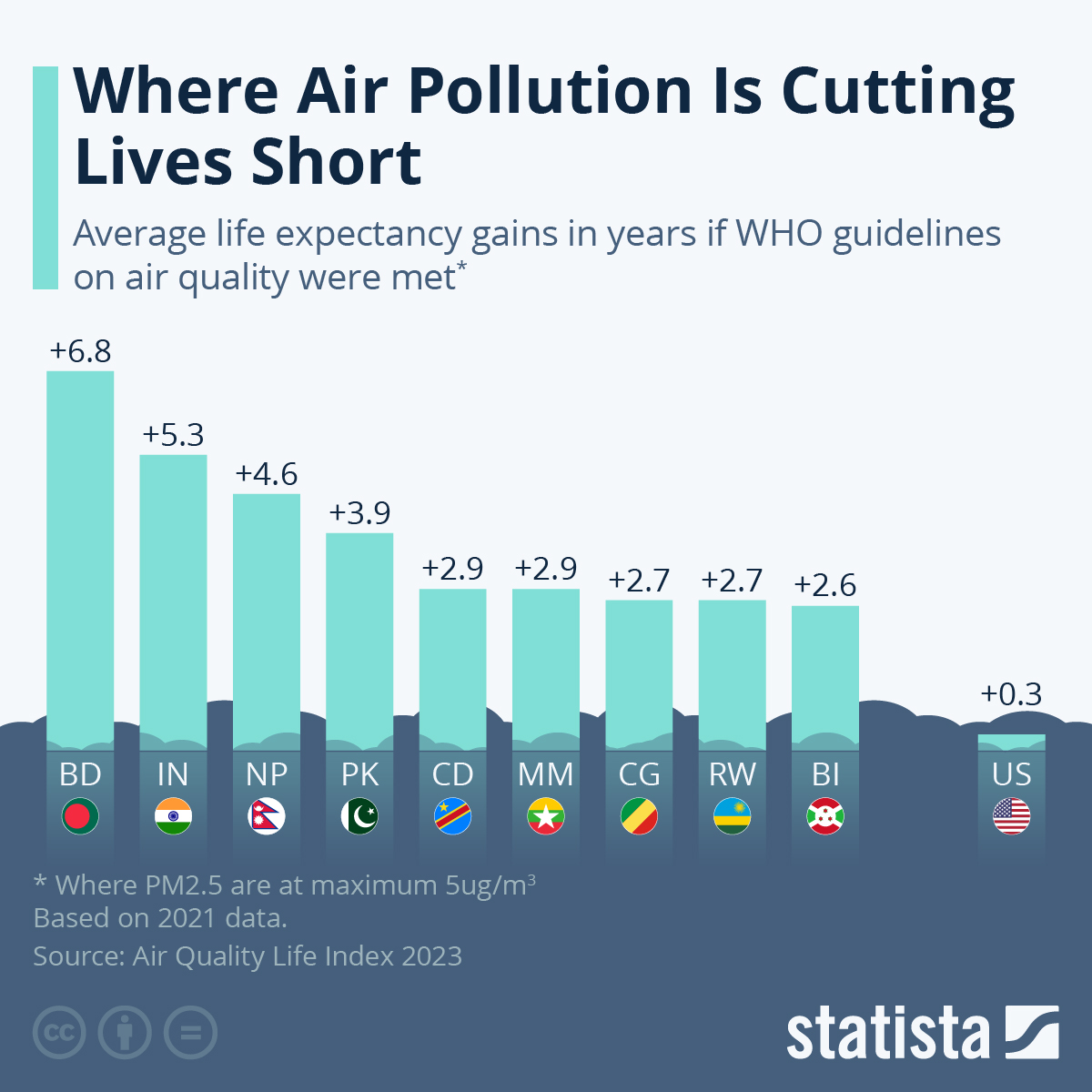The average person on the planet could live 2.3 years longer if global particulate pollution levels were reduced to meet the World Health Organization guideline. This is according to research carried out by the Energy Policy Institute at the University of Chicago and published in the Air Quality Life Index 2023.
In many countries, this figure is far worse. Bangladesh recorded the worst PM2.5 levels worldwide at 74 ug/m3, a stark contrast to the WHO recommendation of a maximum of 5 ug/m3. If these levels of pollution persist, resident’s lives are estimated to be cut short by an average of 6.8 years. The next three worst offenders are also in South Asia, with India ranking second (5.3 years), Nepal in third (4.6 years) and Pakistan in fourth place (3.9 years).
China has seen a marked improvement in recent years. Since 2013, the country has extended its inhabitants’ average life expectancy by 2.2 years – again, so long as these reductions in pollution are sustained. This has been thanks to a push to improve air quality in the nation. However, levels are still dangerous enough to take around 2.5 years off people’s lives.
African countries are also overrepresented in the top nine roundup with the Democratic Republic of the Congo, Rwanda, Burundi, and Republic of the Congo all included. According to the report, the DRC’s regions of Mai-Ndombe, Kwilu and Kasaï are all experiencing levels of air pollution that are losing its residents up to four years of life. This is partly due to waste burning, mining and practices such as cement manufacturing.
The United States ranks comparatively lower with its residents’ lives shortened by 3.6 months. As with all countries surveyed, there are considerable differences depending on the location within the country. For example, in 2021, 20 out of the top 30 most polluted counties were in California due to wildfires.
You will find more infographics at Statista
also read
Ask me anything
Explore related questions






